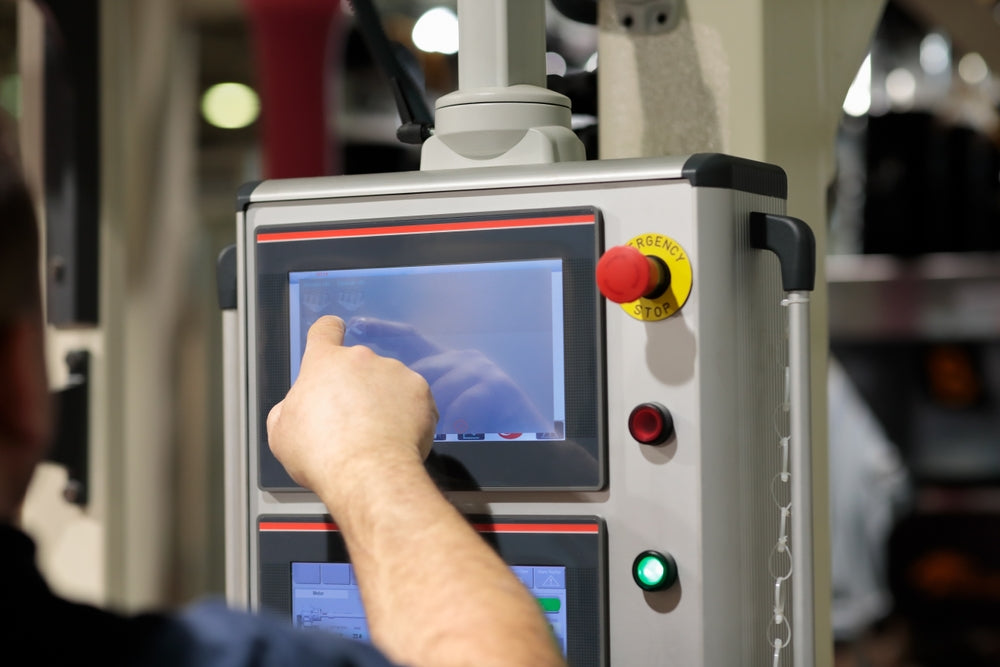
What Is the Principle of Resistive Touch Technology?
Resistive touch technology has been around for decades and remains a popular choice in various industries due to its simplicity and cost-effectiveness. In this article, we’ll explore the fundamentals of resistive touch sensors, how they work, and why they are still a viable option for many touch-screen applications.
What is Resistive Touch Technology?
Resistive touch technology operates based on pressure. It consists of two thin layers, each coated with a transparent conductive material (usually ITO, Indium Tin Oxide), which are separated by tiny spacers. These layers remain apart until pressure is applied, for example, when a finger or stylus touches the screen.
When pressure is applied, the top conductive layer makes contact with the bottom one, changing the electrical current or voltage at the point of contact. This change is then processed to calculate the exact position of the touch.
How Does Resistive Touch Work?
To better understand the functionality, let’s look at the popular four-wire resistive touch sensor:
1. Basic Structure: It contains two layers: the top layer is flexible and made of a transparent conductive material, while the bottom layer is rigid, often made from glass or a durable film, also coated with a transparent conductive material.
2. Pressure Detection: When you press the screen, the two layers make contact at the touch point. A small voltage is applied across the layers. The sensor calculates the X and Y coordinates of the pressure point based on the change in voltage between the layers.
3. Signal Processing: These changes are processed electronically to accurately detect the point of touch on the screen.
While the four-wire version is the most basic, more advanced versions like five-wire, six-wire, seven-wire, and eight-wire resistive touch sensors offer higher accuracy, durability, and resistance to environmental interference.
Advantages of Resistive Touch Technology
1. Cost-Effective: One of the primary reasons companies still choose resistive touch technology is its affordability. The technology is relatively inexpensive to produce, making it ideal for budget-friendly applications.
2. Simple and Reliable: The working principle is straightforward, making it easy to integrate into various devices without the need for complex hardware or software.
3. Works with Any Input: Unlike capacitive touch screens, which only respond to conductive materials like your fingers, resistive touch screens work with any object—whether it’s a stylus, pen, or even a gloved hand. This makes them ideal for industrial applications or medical environments where users may wear gloves.
4. Accurate Single-Point Touch: Resistive screens are highly accurate for single-point touch interactions, ensuring precise control in applications that don’t require multi-touch features.
Limitations of Resistive Touch Technology
While resistive touch technology offers a range of benefits, it also has its downsides:
1. No Multi-Touch Capability: Unlike modern capacitive screens, resistive touch sensors only detect one touch point at a time, which limits their use in interactive multi-touch applications.
2. Less Sensitivity: Since resistive touch relies on physical pressure, it tends to be less sensitive compared to capacitive touch technology. Over time, repeated use may result in wear and tear, reducing its sensitivity.
3. Durability: While more advanced models like five-wire resistive sensors offer enhanced durability, the surface is still prone to scratches and wear over time, especially in harsh environments.
Applications of Resistive Touch Technology
Resistive touch technology continues to be widely used in various industries due to its cost efficiency and simplicity. Some common applications include:
• Industrial Controls: In environments where workers wear gloves or need precise control, resistive touch screens are preferred over capacitive options.
• Medical Devices: Medical professionals often wear gloves, making resistive touch ideal for use in medical equipment.
• Point of Sale (POS) Systems: Many retail and hospitality businesses still rely on resistive touch for their point-of-sale terminals due to its durability and affordability.
• Automotive Displays: The ruggedness and reliability of resistive screens make them suitable for automotive dashboards and infotainment systems.
Resistive touch technology may be an older technology, but it remains highly relevant today. Its cost-effectiveness, durability, and ability to work with any input source keep it competitive in various industries like healthcare, industrial control systems, and retail. For applications that require single-point touch accuracy and don’t demand multi-touch capabilities, resistive touch screens are an excellent choice.
